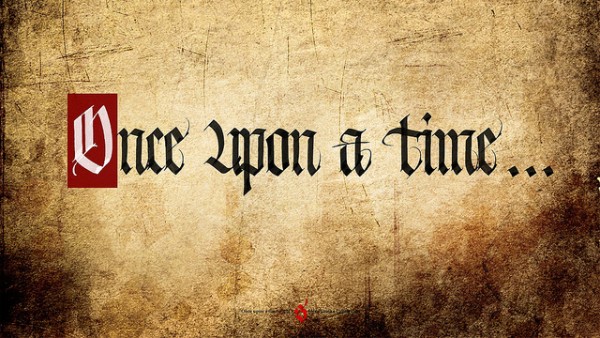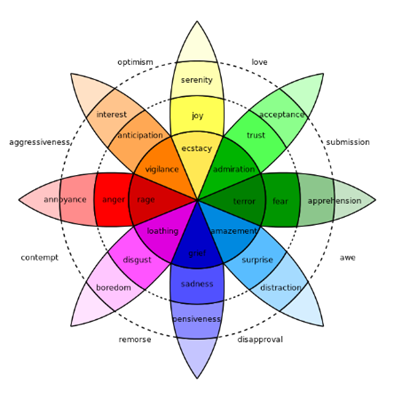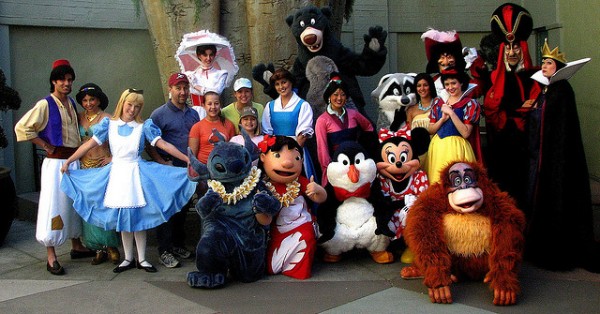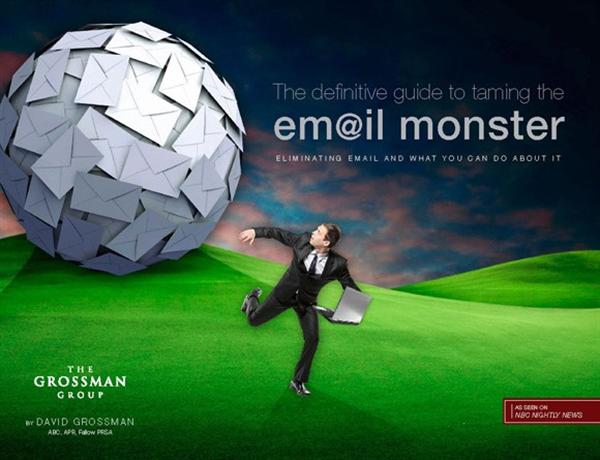Once upon a time, there was a lonely prince locked up in a tall tower. On his shoulders was the burden of the world (or at least, his business. Which kind of felt like his entire world).
Day in and day out the Prince would sit hunched over in the dark, shut in from the world, his nimble fingers working hard to produce content that would one day lead him to freedom.
But the days soon turned into years, and he became so tired.
So one night, while gazing out of his window, wondering what he was doing wrong, he saw a shooting star pass before his eyes.
Feeling a little foolish, but like he had no other options on hand, he very quietly made a wish.
Afterwards he stood very still for a few minutes. And then a few more.
The stars got him thinking about his childhood.
He thought of the moments when his dad told him the story of the man on the moon and then he would always finish by humming Twinkle, Twinkle Little Star.
So there, beside the window, the lonely Prince stood very still and stared at the sky. And he remembered how inspiring those stories were to him. And how close he felt to his dad during those moments.
That’s when he went back to his computer, straightened up his shoulders and began “Once Upon A Time…”
Of course, he continued to tell people about his business. But instead of data, and facts, he brought them on journeys and adventures. He took them through jungles, past dragons, and up mountains.
He flew on the back of the greatest creatures alive. He rescued princesses. He swam in shark infested waters.
In short, he became a storyteller.
His business boomed and his tall tower became a beautiful castle that he could come and go as he pleased. He was free, and most importantly, he was happy.
Bringing Storytellng Back Into Your Life
Storytelling is a great way to engage people.
If you’re a parent, or a teacher, if you have younger siblings, nieces, nephews, if you engage with children in any shape or form, if you remember your childhood stories with affection, you’ll have realized the importance of good storytelling already.
So why am I telling you again?
Well, just like the Prince above: We all forget sometimes.
We forget that when we read a book, or watch TV, gossip with our friends or go to a movie, we’re all taking part in a tradition as old as time itself: Storytelling.
Storytelling is what we do when we want (or need) to unwind. Storytelling is a way for us to understand the world around us, to make us feel less alone.
Storytelling is important, memorable and valuable to us.
In content marketing, we tell our own stories. But often we too narrowly define how these stories should be expressed.
They should be informational, direct, serious, long-form, relevant, professional etc.
And yes – they should be all these things (well… maybe not always serious!) But that’s not to say we can’t also tell a story too.
How Can Storytelling Help Your Marketing
- Storytelling engages your audience in a new way.
- 92% of consumers would prefer media messages to sound like a story.
- The brain processes images 60 times faster than it does words. Stories are about creating images (sometimes physical, sometimes literal)
- Storytelling releases a chemical in the brain called dopamine that helps with memory and accuracy.
- Storytelling will help make your consumer feel how you feel about your product, through a process called “mirroring” that happens in the brain when we hear stories.
- Our brains crave stories: We spend about a third of our lives daydreaming.
The Ingredients Of Effective Storytelling
There are a lot of things that make a story. Too many to name really.
But here are just a few storytelling features that I’ll discuss in relation to content marketing:
- 3 Act Structure
- Emotion
- Character
- 7 Basic Plots
3 Act Structure
The three act structure is a basic structure used in writing, drama, film and, of course, storytelling.
It is, very simply, about creating a solid beginning, middle and end.
Act 1
The first act is the setup.
This is where you introduce your main character (who we’ll talk about a little later) and you set the scene.
How To Apply This To Content Marketing
Your character can be anybody (or anything) but it’s often your typical target audience.
Your scene can be anywhere you think is appropriate for your character.
For example, Epuron created the character of Mr. W who goes around the city annoying everybody. That is, until someone finally sees potential in him and puts him to good use (wind energy).
The character is actually a personification of the wind itself, but Epuron cleverly makes us realize how under-utilized its been, how misunderstood it is, and how ideas that it’s just “annoying” are actually quite ridiculous.
Act 2
The second act is where the character experiences their first conflict. The conflict could be emotional, physical, philosophical etc.
Act 2 is usually the biggest part of the entire plot, as it’s when the audience begins to empathise with the character. The character tries to find solutions to the problems, and usually fails once or twice before they succeed.
How to Apply This To Content Marketing
Most marketers leave out act 2. Instead, the cut right to the chase with “You have a problem, we can solve it”.
But the issue with that approach is that you’re not engaging people in their own problems. You’re not discussing why other options have failed. You’re not highlighting the difficulties that they are (or could be) facing.
For act 2, the point is to highlight to your target audience the struggles that they’ve been (or could potentially be) going through.
A fantastically successful example of content marketing that has done this is the Metro Train video Dumb Ways To Die that was created as part of safety awareness campaign.
In this video, the focus is on the conflict itself: Everyone uses transport, and here are some ways that it can be dangerous.
Act 3
In the final act, we see the critical turning point as the conflicts are resolved (or are they??).
It can be that the characters realized what they had wanted all along wasn’t what they needed, or it could be that they achieve their goals.
How to Apply Act 3 To Content Marketing
This is where you come in! Superhero to the rescue!
You’ve created a situation where your target audience has a problem, so now it’s time to be the hero.
Most marketers and small business owners don’t have trouble with this act, as they understand that they should be selling their worth to their target audience. However, a “business to the rescue” act is much more effective when audience has been persuaded that they need help.
An example of a fantastic Act 3 (following a very persuasive Act 2) is Dollar Shave Club.
The video has gotten over 15 million views on Youtube (yes, you read that right!).
It concentrates on the problems their target audience might have throughout most of the video, and then bam! Their message is loud and clear! They can solve all those problems for you! (Even if you hadn’t really thought about it before).
Be Emotive
Dumb Ways To Die and Dollar Shave Club have one thing in common: They make people smile.
Dumb Ways To Die uses cute cuddly characters, a catcyh song and mostly funny scenarios in order to engage their audience and make them laugh. While Dollar Shave pokes fun at the “too cool for school” salesman type and turns the cliché on its head.
Consumers love feeling a personal connection with a brand. We know this, and a Nielsen study has actually proved this.
Storytelling is a great, creative and intelligent way to get people feeling.
Science has told us that we have four “basic” emotions: Happy, sad, afraid/surprise and angry/disgusted.
But obviously, humans aren’t that simple.
Robert Plutchik took these basic emotions to create his very famous “wheel of emotions”. In this wheel he shows each “basic” emotion has a layer of complexity to it that involves other feelings and therefore, creates a new one.
In this chart we see that emotions, jut like colors, can be mixed together to create different results.
The complexity of emotions is what makes storytelling so effective. Sure, we might feel happy from a story, but we also might feel amazement or trust too.
Jonah Berger, a professor of marketing in the Universtity of Pennsylvania’s Wharton School, along with another fellow Penn professor, Katherine Milkman, wanted to figure out what made stories viral.
The two professors studied almost 7,000 articles in The New York Times to figure out what it was about their content that made it so popular.
They found that articles with some emotion outdid those with none, while articles with happy emotions outdid those with sad ones. In the end, they concluded that the more positive the content was, the more likely it was to go viral.
Storytelling is a great way to evoke emotions, and if emotions are what makes content popular, then it seems pretty clear that we need to start telling more stories.
Creating Your Character
Before you start writing, you should know your characters well.
Your characters can be anybody. They can be the CEO of the business, the employees that work for you, or more commonly, the main character can be based on some or all of the typical personas of your target audience.
Whatever you choose, the main character should be someone that your audience cares about, but they shouldn’t be perfect. Perfection is not only boring, it will alienate your audience.
An example of a business creating fantastic characters that consumers can relate to, root for (and often find quite hilarious) is Aviva. Aviva is a multinational insurance company whose headquarters are located in London. Their videos directly engage with their target audience (which is a huge range of people considering they’re an insurance company).
Still, they don’t let that hold them back, creating a variety of different videos depicting different characters utilising Aviva’s services to fix problems and improve their lives.
Yoga Dan is the viewers’ favourite. He’s a lovable character, but flawed all the same. People can relate to him (we all know that guy) and they also want to root for him (because, well… we all know and love that guy!)
The 7 Basic Plots
Now that you know how to structure your story, what type of emotions you should try and touch, and who your characters are, let’s move on to plot (what your story is about).
In 2005 Christopher Booker released a book entitled The Seven Basic Plots: Why We Tell Stories. In this book, Booker theorizes that there are only 7 plots that most stories will fit in to.
Booker suggests that there is always a journey (which can be literal or metaphorical) that the story’s main character must undertake.
The seven plots are:
- Overcoming the Monster
- The Quest
- Tragedy
- Rebirth
- Romance
- Voyage and Return
- Rags to Riches
With those in mine, let’s take a look at each basic plot, what content marketers can do to create these plots with their own goals in mind, and some examples of each.
1. Overcoming the Monster
From the old tales of Beowulf to the newer ones such as Transformers, we’re all familiar with the different monsters that can rear their ugly heads in stories.
And, just to be clear, the monster aren’t always a literal one.
Demostos do a fantastic job at personifying their “problem” into a monster. Their problem is, of course, germs!
Another great example is the ebook The Definitive Guide to Taming the Email Monster created by The GrossMan Group. While the ebook doesn’t continue the story throughout, the title is enough to engage audiences and play on their imaginations.
2. The Quest
The Quest is about a hero who sets out to perform a task. They usually have friends/allies with him to help out.
Movies such as Lord of the Rings and Indiana Jones are examples of Quest storytelling.
Jobvite created a fantastic quest-like infographic in order to explain the procedure regarding how to find the perfect employee, or as they phrase it, The Search For The Pink Unicorn.
Not to be forgotten is Dell The Journey video created by Dell’s marketing team for their keynote address at Oracle Open World in 2006.
The video sees an animated Michael Dell clad in armour, joined by EMC’s Joe Tucci, Oracle’s Larry Ellison, AMD’s Hector Ruiz and Intel’s Paul Otellini on a journey to defeat the “Big Iron” dragon and lead their customers to Global Standardopolis.
The video is obviously not directed at consumers, but at fellow business men. Still, it gets its point across in an engaging and interesting way!
3. Tragedy
From the age-old tragedy that is Hamlet to the modern day Schindler’s List and the Titanic, every tragic film has one thing in common: A protagonist who wants something really badly, but who will suffer greatly to achieve it.
After getting some bad press when two Dominos employees were shown on Youtube playing pranks on customers, Dominos brand was starting to crumble. That’s why in 2010 they needed to do something to improve their image. They needed to reconnect with their customers.
What they did was genius: They used their tragedy to show how they’re working through it. They used their hardships to actually relate, engage, listen and work with their customers.
Bonus: Everyone loves an underdog.
4. Rebirth
Rebirth is similar to tragedy, except that instead of hitting rock bottom, something intervenes and allows the character to change their ways before it’s too late.
You probably recognize the plot as being integral to movies such as A Christmas Carol and Groundhog Day, as both films feature a main character who is brought on another path due to an intervening factor.
Skoda did a case study on its rebirth, which you can find here.
For Skoda, after WWII, the minimalistic ideologies of the Czechoslovakian government meant that the quality of their products was stunted. However, after the Velvet Revolution in 1989, the Czech Republic was formed and Skoda was able to find support from outside sources.
5. Romance
From Jane Austin to The Notebook you’re probably familiar with the plot line. Usually two souls that are destined to be together are separated for some reason or another, but strive to get back together once again.
For marketing, romance represents a back to origin story, where one person finds their true path or destiny again.
One very successful marketing campaign that uses romance to sell their products is the famous Moleskine notebooks. The small black notebooks were used by creatives such as Vincent van Gogh, Pablo Picasso, Ernest Hemingway, and Bruce Chatwin, but went out of production when the small French Bookbinder who produced them went out of business.
Moleskin thus reinvented itself, but with the romantic notion that they were recreating what the masters of the past used as staples for their creative processes.
6. Voyage and Return
In stories like Alice in Wonderland and Inception, a hero finds him or herself in a world where everything is different, where they can’t make sense of something. However, the voyage teaches them about the world and about themselves, and the return is usually one of enlightenment.
The Peace Corps is all about encouraging this type of journey. Their tagline, “the toughest job you’ll ever love,” says it all really. Their PSAs usually contain testimonials, with other volunteers talking about their journeys, to encourage others to join.
Expedia have used their position as leader’s in the travel industry to start a campaign entitled “find yours”. The campaign shows different people on journeys (literal ones) to other places, and who find meaning and understanding in those journeys.
One very poignant story is of a father who goes to his daughter’s wedding, skeptical about her choice to marry another woman. In video, he realizes how happy his daughter is with her partner, and has his perspective changed on the relationship.
7. Rags to Riches
Rags to Riches stories are fantastic for the soul as they spark hope in the imaginations of audiences. We all know them from such stories as Cinderella and Rocky.
Johnnie Walker whiskey made a fantastic video in which the story of Johnnie, a “Victorian farm-born grocer” from Scotland, rises to fame and success after creating the most consistent blended Scotch Whiskey in the world.
The story ends with the words: “Two hundred years later and Johnnie Walker’s still walking and he’s not showing any signs of stopping.”
Storytelling isn’t easy.
Every story has a different structure, different characters and different plots, but it’s up to you as a marketer to put all these factors together to produce a story that you’re target audience is willing to listen to.
If you have any other suggestions, or examples of content marketing that uses storytelling as a way to connect with their audience, please feel free to share!










